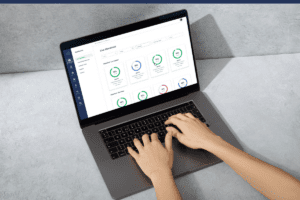Five Ways To Get More Out Of Your Student Feedback Surveys
In the ever-evolving landscape of career education, the key to success lies in understanding the needs and expectations of the very individuals it serves—students. Organizations increasingly recognize the immense value of student feedback as a catalyst for positive change. By actively collecting and leveraging student satisfaction feedback, these institutions can pave the way for an enhanced educational experience, ultimately shaping the future of career education.
Why is student feedback so vital?
Student satisfaction feedback is a compass, guiding schools towards continuous improvement, a student-centric approach, and a culture of accountability.
Collecting student feedback helps schools:
- Continuously improve programs, curriculum, and overall experience.
- Take a student-centric approach.
- Improve retention and success.
- Boost accountability and transparency.
- Improve institutional reputation and identify risks early.
- Meet accreditation requirements.
- Enhance diversity and inclusion.
- Power evidence-based decision making.
But collecting student feedback goes beyond checking an “I’m satisfied” box.
Gone are the days of simply distributing surveys and collecting responses. Instead, it’s time to elevate the process into an opportunity for meaningful dialogue, actionable insights, and tangible improvements. In this blog, we’ll cover five ways to get more out of your student feedback surveys and supercharge your school’s success.
1. Increase survey frequency
Schools often conduct surveys at specific pre-determined points throughout the year, depending on the program and policies. For example, midpoint and end-of-module surveys are traditional options for most career education programs based on accreditation requirements. But things happen, and student satisfaction can change quickly.
Increasing the frequency of student satisfaction surveys helps schools identify trends, address issues promptly, and track the impact of implemented changes. By leveraging a tool that automates and simplifies surveys, schools can increase the frequency of student surveys without adding significant lift.
2. Proritize actionable feedback
While general questions like “are you satisfied with your program?” are valuable to include in surveys, they aren’t very actionable without follow-up questions. Focus instead on feedback that highlights specific issues and suggests actionable solutions, prioritizing areas where you can make improvements quickly and effectively.
For example, during her time as COO at Legacy Education, Ena Hull implemented more actional questions as part of their student surveys. She found that students were dissatisfied with the quality of the breakroom as the microwaves were regularly broken. As a result, students spent all day in class without a satisfying lunch and found it challenging to focus. Ena quickly purchased better microwaves for the student breakroom.
By acting quickly when a student raised these concerns, Ena made the students feel heard and valued. Because they’ve seen that their school is listening to their feedback, they’re more likely to provide open feedback in the future.
3. Compare responses by different subgroups
Looking at student feedback data in bulk is a great place to start, but it’s only the tip of the iceberg. Drilling down into different instructors, programs, campuses, or courses can help you identify focused trends that may not be applicable across the organization. For example, you may notice trends like higher satisfaction rates with particular instructors or lower-than-average satisfaction rates at one campus.
By identifying areas of dissatisfaction, you can start digging deeper to understand the WHY and be proactive about making changes.
4. Compare responses to quantitative data
Student feedback surveys are valuable, but self-reported metrics aren’t always fully honest. Because students may feel uncomfortable submitting a poor satisfaction survey, it’s important to pair surveys with quantitative data to identify potential issues. For example, a student could submit a glowing feedback survey, but when you look at their attendance data, you see that they aren’t showing up to class consistently. If that’s the case, they could be phoning the survey response in, checking boxes without even looking at them. While it’s great to celebrate wins and positive surveys, looking at survey results strategically with other data sources will ensure your team catches every red flag.
5. Establish feedback loops
When Ena got her students new microwaves, it was a highly visible action; students could see that she valued their feedback. Implementing student feedback won’t always be this visible, but students need to feel heard to continue giving honest responses. Establishing a feedback loop will ensure that students feel valued and like their feedback matters.
Whether through regular updates, newsletters, push notifications, or another dedicated platform, keep students informed about how their feedback has influenced decision-making and improvements, particularly if these are long-term projects.
Get more out of your student feedback surveys with CourseKey
Student feedback surveys hold incredible potential to drive positive change and create an exceptional learning experience for all. By implementing strategies to maximize the impact of these surveys, institutions can unlock a wealth of insights, foster student engagement, and create a culture of continuous improvement.
CourseKey helps schools implement these strategies by:
- Combining the different factors of student success in one location
- Improving data visualization to better identify trends
- Automating surveys and reporting
Request a demo to learn more about why 300+ schools across the country chose CourseKey to power student success.
Recent Articles

















